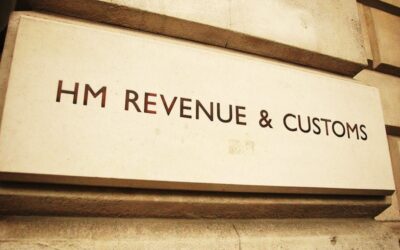-
In 2016 Chancellor George Osborne declared the introduction of the loan charge would “shut down disguised remuneration schemes”.
-
Yet HMRC estimates 31,000 people used such schemes in 2020-21, resulting in a loss of £400m in tax.
-
The authorities have attempted to address the demand and supply of such schemes, using mainly administrative and civil penalties.
-
While tens of thousands face the loan charge, few enablers have faced hurtful sanctions.
-
Fewer than six financial penalties for enabling defeated tax avoidance schemes have been issued since 2017.
-
Fewer than five investigations into disguised remuneration tax avoidance schemes resulted in a criminal charge since 2017.
-
Recent proposals are unlikely to shut down the disguised remuneration schemes anytime soon.
In the recent Spring Budget the government proposed to consult on a new criminal offence for those who fail to comply with a legal notice from HMRC to stop promoting a tax avoidance scheme1. This is welcome news, for the latest official estimates suggest that in 2020-2021, approximately 31,000 people were still using such schemes, and the UK lost £400m in tax as a result2. A staggering 99% of the tax avoidance market3 involves disguised remuneration (DR) – contrived arrangements that use schemes which use loans, annuities, shares or other valuables to make allegedly non-taxable payments in lieu of wages. Hospital workers constitute the largest group who are involved in such schemes today4. Many do not know they are participants in such schemes – at least until later when HMRC demand the tax owed. Others are unaware of HMRC’s view these schemes do not work5.
However, in terms of penalties it has been the users, not those promoters and enablers of unsuccessful schemes, who have been the most heavily penalised, most notably in the form of the Loan Charge imposed upon 50,000-100,000 people6. Introduced in the Finance Act 2017, the controversial policy places an income tax charge on the value of outstanding ‘loans’ on 5th April 2019 held by people who used disguised remuneration schemes. As originally drafted, the charge applies to any ‘loan’ entered into since 1999. In the 2016 Spring Budget speech, then Chancellor of the Exchequer George Osborne declared the introduction of the loan charge would: “Shut down disguised remuneration schemes”7. It is clear that his prediction has yet to come true.
Action taken
Over the past two decades, the authorities have correctly attempted to address both sides of the tax avoidance problem. In terms of demand, legislative changes have required the earlier payment of tax in dispute, as well as the loan charge. HMRC has been gathering lots of information about the tax avoidance market and this has enabled it to try to nudge and prompt the public into compliance, using emails, blogs, webpages, dedicated agent services and a helpline8.
The collection of information has also facilitated HMRC’s attempts to deal with suppliers of schemes operating outside of the spirit of the laws on tax. Thus, tax advisers have been required to disclose details of their avoidance schemes promptly under the Disclosure of Tax Avoidance Schemes (DOTAS) regime since 2004. However, while this enabled HMRC to identify many potential problems more quickly, within a decade the government felt the need to introduce the Promoters of Tax Avoidance Schemes (POTAS). It empowered HMRC to impose conditions on the behaviour of: “a small number of promoters who operate in a culture of non-disclosure, non-co-operation and secrecy”9. It also enabled the issuing of notices to promoters to stop them from selling schemes that had been defeated.10 Since then, HMRC has been authorised to impose financial penalties upon any enablers involved in the managing, marketing, designing or financing of defeated, abusive tax arrangements that were entered into on or after 16 November 2017.
HMRC has introduced, or supported, new codes of behaviour including its own Standard for Agents (2016), and the tax and accountancy professions’ Professional Conduct in Relation to Taxation (2013), and it reports tax advisors to their professional bodies. In addition, it can suspend tax agents’ access to its systems, or refuse to deal with any who seriously abuse the tax system11. HMRC frequently litigates civil action in tax tribunals, and occasionally it takes action against tax evaders and the promoters of tax avoidance schemes in criminal courts.
As a result of these changes and legal decisions, the nature and focus of disguised remuneration schemes have changed over the last decade or so. A HMRC policy paper states: “their creation and promotion have moved to the more disreputable and shadier end of the market”12. These days, marketed avoidance schemes almost always involve employer businesses and “umbrella” companies engaging larger numbers of contractors or agency workers, operating arrangements which falsely claim to reduce Pay As You Earn and National Insurance Contributions. Umbrella companies can provide a legitimate business structure and services for contractors, but in some instances, they facilitate avoidance schemes.
Currently, HMRC estimate there are around 70 to 80 non-compliant umbrella companies in operation13. This is no improvement on its suggestion there were 60 to 80 of these operating14 in 2019-20. Similarly, each of its recent reports on the marketing of disguised remuneration schemes note about 20 to 30 promoter organisations: “are behind most of the tax avoidance schemes that are marketed to the UK public”15. The fact that as many new promoters and companies have entered the market in recent years as have left, suggests HMRC’s actions have failed to shut down disguised remuneration schemes. One result is the authorities have proposed or introduced, even more changes in the last few years.
Will the latest approaches defeat disguised remuneration schemes?
Recent ideas to reduce demand include; publishing a guide to help contractors engaged through umbrella companies, greater cooperation between HMRC and the Advertising Standards Authority (ASA), and listing promoters and enablers of tax avoidance schemes in the hope recipients of their advice will leave these schemes.
However, it is difficult to suggest these will have more than a marginal impact on the demand side. It is incredibly optimistic to expect most contractors to read official guides, or the newly employed to walk away if they find out they are paid in an unusual manner16.Similarly, even if the enablers are ‘named and shamed’ contemporaneously – presently it can take years to be listed, and names are removed from the list after 12 months – it is unrealistic to assume tens, if not hundreds of thousands of temporary workers will conduct regular checks on those who pay them A slight decrease in the number of deceptive adverts may mean some people do not fall for the schemes. The ‘naming and shaming’ list may also have a marginal impact on the supply side, in that some potential enablers may not risk the listing of reputation, or may fear being reported to their professional body as a result.
Interestingly, it was a listing on 18th August 2022 that triggered TaxWatch’s examination of Gateway Outsource Solutions and its complaint to the ICAEW about its director Paul George Ruocco17. However, while better contact with professional bodies may deter a few potential suppliers, these days promoters are almost never members of the professional bodies – as HMRC itself noted18. This then takes us on to consider other recent approaches to address the supply side.
To address the problems arising from the non-cooperation, delaying tactics by those promoting tax avoidance schemes and their dissipation of assets in order to avoid fines, the DOTAS and POTAS regime has been toughened to allow HMRC to obtain information from promoters earlier than in the past. The Finance Act 2022 authorised HMRC to apply for freezing orders when it has a good arguable case there may be a dissipation of assets to prevent the imposition of a tax penalty. It also enabled the organisation to petition a court to wind-up companies operating against the public interest. This can include persistent non-compliance with anti-avoidance rules, or a repeated failure to respond to HMRC’s requests for information19.
To address the problem of ‘phoenixism’ – the re-birth of a company by people involved in one that has been dissolved in order to avoid tax obligations – the government amended legislation to allow POTAS obligations to be transferred to other scheme-promoting entities controlled by the same individuals. To facilitate this, HMRC proposes better cooperation with the Insolvency Service. It has also suggested giving relevant cases to the Financial Conduct Authority. Finally in this regard, the government introduced legislation which allows HMRC to impose a new penalty on UK-based entities that assist the activities of offshore promoters. In general, these people are more difficult to deal with because of the complex nature of schemes and the UK’s reliance on the authorities elsewhere. The value of the new penalty on the UK promoter can be as high as the total fees earned by all those involved in the development and sale of that tax avoidance scheme – potentially including fees paid directly to the offshore promoter, and any other entities or persons who formed part of the ‘promotion structure’ for the scheme.20
These moves are a step in the right direction, in particular the stiff financial penalties facing UK-based entities in league with overseas promoters contained in the Finance Act 2022. However, to produce a sudden step-change HMRC needs to implement all of these approaches – especially the tougher ones – at speed and at scale. Unfortunately, this seems unlikely.
For example, HMRC has had the ability to charge an enablers penalty since 2017. However, it requires the scheme use to be defeated and an opinion from the General Anti Abuse Rule (GAAR) panel. The first opinion of the panel in respect of an enablers’ penalty was published in October 2022. In addition, while it has been possible to obtain freezing orders and winding-up orders for almost a year, not one of either21 had been obtained by the time we spoke to HMRC in March 2023. This suggests each process either takes a long time or HMRC did not have targets in mind when the legislation was introduced.
The speed at which various sanctions and financial penalties can be imposed by HMRC is unlikely to increase anytime soon. This is because the number of cases outstanding at the First-tier Tax Chamber has increased by 52% to 45,000 in the last year – primarily, as a result of it receiving a high number of cases and the time it takes to decide each22.
The scale of implementation is important for if enablers are to be deterred, they need to believe there is a good chance they will face a strong sanction. This seems unlikely, given HMRC has not implemented the tougher sanctions at scale in the recent past.
It did make 75 professional interest disclosures for any breach of its Standards for Agents to professional bodies23 between 2018-19 and 2021-22, but this is will have little impact given most promoters are not members. HMRC has ‘named and shamed’ 27 promoters of tax avoidance schemes24 as of 23rd March 2023. While we will not find out the impact of this until next year, it is unlikely to put a stop to the problem of mass-marketed avoidance schemes given HMRC’s belief new companies continue to join this illicit market as others leave.
As for the use of sanctions that have a greater chance of deterring, HMRC has issued fewer than six financial penalties for enablers of defeated tax avoidance schemes25 since 2017. Similarly, it opened only 15 criminal investigations in relation to arrangements that it categorised as disguised remuneration tax avoidance schemes between 1st April 2017 to 8th March 2023. Of these, fewer than five progressed to a charging decision or resulted in a criminal conviction26. Surely, this is a major reason the number of promoters has remained the same in recent years?
As for the ideas in the recent budget, the idea of expediting the disqualification of directors of companies involved in promoting tax avoidance is unlikely to be a game-changer for disqualified directors can simply find others to front their companies. The proposal to prosecute those who refuse to stop promoting schemes is more promising – especially if it contains strong sanctions including imprisonment. However, even if it is proposed the new law will cover schemes in operation now, it is unlikely to be applied at the appropriate scale anytime soon. The consultative and legislative processes take a while, and not everything gets through it – as advocates of compulsory professional indemnity insurance for tax advisers will remember. Similarly, the proposal could be shelved afterwards – as happened recently to the plan to create a single enforcement body to monitor the treatment of employees by umbrella companies and others.
Unless HMRC decides to change its criminal investigation efforts from focusing on “very serious evasion and organised crime”27, the number of enablers prosecuted is unlikely to change dramatically. In sum, he main reasons the number of promoters is not declining is because enforcement action takes too long, many of the actions are weak and stronger sanctions are rarely applied. What needs to happen is for HMRC to use its wide-ranging set of powers – including criminal investigations – at speed and at scale. Perhaps then the government will be able to do what George Osborne’s loan charge failed to do, shut down disguised remuneration schemes. Hundreds of millions of pounds a year in lost tax revenue are at stake.
This story was featured in The Times
1 Spring Budget 2023, HM Government, 15 March 2023, https://www.gov.uk/government/publications/spring-budget-2023/spring-budget-2023-html
2 Use of marketed tax avoidance schemes in the UK (2020 to 2021), HMRC, updated 30 November 2022, https://www.gov.uk/government/publications/use-of-marketed-tax-avoidance-schemes-in-the-uk/use-of-marketed-tax-avoidance-schemes-in-the-uk-2020-to-2021
3 Use of marketed tax avoidance schemes in the UK (2020 to 2021), HMRC, updated 30 November 2022, https://www.gov.uk/government/publications/use-of-marketed-tax-avoidance-schemes-in-the-uk/use-of-marketed-tax-avoidance-schemes-in-the-uk-2020-to-2021
4 Use of marketed tax avoidance schemes in the UK (2020 to 2021), HMRC, updated 30 November 2022, https://www.gov.uk/government/publications/use-of-marketed-tax-avoidance-schemes-in-the-uk/use-of-marketed-tax-avoidance-schemes-in-the-uk-2020-to-2021
5 Tax avoidance loan schemes and the loan charge, HMRC, updated 9 February 2022, https://www.gov.uk/government/publications/loan-schemes-and-the-loan-charge-an-overview/tax-avoidance-loan-schemes-and-the-loan-charge . For a more detailed discussion of the law with regards to tax avoidance see TaxWatch’s briefing: Is Tax Avoidance Legal? Available from: http://13.40.187.124/is_tax_avoidance_legal/
6 Ray McCann, President of the Chartered Institute of Taxation in answer to Q.105. Oral Evidence: The conduct of tax enquiries and resolution of tax disputes, House of Common Treasury Sub-committee, HC 733, 10 December 2021, https://data.parliament.uk/writtenevidence/committeeevidence.svc/evidencedocument/treasury-subcommittee/the-conduct-of-tax-enquiries-and-resolution-of-tax-disputes/oral/93722.html
7 Budget 2016: George Osborne’s speech, Gov.uk, 16 March 2016, https://www.gov.uk/government/speeches/budget-2016-george-osbornes-speech
8 Managing tax compliance following the pandemic: HM Revenue & Customs. SESSION 2022-23. National Audit Office. 16 December 2022. HC 957. https://www.nao.org.uk/wp-content/uploads/2022/12/managing-tax-compliance-following-the-pandemic-report.pdf
9 HMRC Investigations Handbook 2016/17 (Bloomsbury, 2017), M. McLaughlin, (ed). p147
10 New powers for HMRC: fair and proportionate? House Of Lords, Economic Affairs Committee, 19 December 2020, p11.
11 Raising standards in the tax advice market, HMRC, 10 March 2022, https://www.gov.uk/government/publications/raising-standards-in-the-tax-advice-market-hmrcs-review-of-powers-to-uphold-its-standard-for-agents
12 The Rt Hon Jesse Norman MP, the then Financial Secretary to the Treasury in: Tackling promoters of mass-marketed tax avoidance schemes, HMRC, updated 23 March 2020, https://www.gov.uk/government/publications/tackling-promoters-of-mass-marketed-tax-avoidance-schemes
13 Use of marketed tax avoidance schemes in the UK (2020 to 2021), HMRC, updated 30 November 2022, https://www.gov.uk/government/publications/use-of-marketed-tax-avoidance-schemes-in-the-uk/use-of-marketed-tax-avoidance-schemes-in-the-uk-2020-to-2021
14 Use of marketed tax avoidance schemes in the UK (2020 to 2021), HMRC, updated 30 November 2022, https://www.gov.uk/government/publications/use-of-marketed-tax-avoidance-schemes-in-the-uk/use-of-marketed-tax-avoidance-schemes-in-the-uk-2020-to-2021
15 Use of marketed tax avoidance schemes in the UK (2020 to 2021), HMRC, updated 30 November 2022, https://www.gov.uk/government/publications/use-of-marketed-tax-avoidance-schemes-in-the-uk/use-of-marketed-tax-avoidance-schemes-in-the-uk-2020-to-2021
16 In addition, Meredith McCammond of the Low Incomes Tax Reform Group suggested: “The list will also do nothing for those who may have little choice to be paid by a non-compliant umbrella company if they want the work.” ‘HMRC adds three AML schemes to its tax avoidance blacklist’, Contractor, Simon Moore, 31st January, 2023, https://www.contractoruk.com/news/0015769hmrc_adds_three_aml_schemes_its_tax_avoidance_blacklist.html
17 Director of suspected HMRC tax avoidance scheme continues to be member of professional body, TaxWatch, 02 Februart 2023, http://13.40.187.124/hmrc_name_shame_complaint/
18 Use of marketed tax avoidance schemes in the |UK (2018 to 19), HMRC, updated 30 November 2022, https://www.gov.uk/government/publications/use-of-marketed-tax-avoidance-schemes-in-the-uk/use-of-marketed-tax-avoidance-schemes-in-the-uk
19 Clamping down on promoters of tax avoidance: summary of responses, HMRC, updated July 2021, https://www.gov.uk/government/consultations/clamping-down-on-promoters-of-tax-avoidance/outcome/clamping-down-on-promoters-of-tax-avoidance-summary-of-responses
20 Clamping down on promoters of tax avoidance: summary of responses, HMRC, updated July 2021, https://www.gov.uk/government/consultations/clamping-down-on-promoters-of-tax-avoidance/outcome/clamping-down-on-promoters-of-tax-avoidance-summary-of-responses
21 According to a spokesperson from HMRC, 13 March 2023.
22 Tribunal Statistics Quarterly: July to September 2022, Ministry of Justice. 8 December 2022, Section 8. www.gov.uk/government/statistics/tribunal-statistics-quarterly-july-to-september-2022/
23 During the period 2018-19 to 2021-22. HMRC FOI2022/72035, 05 December 2022.
24 According to a spokesperson from HMRC, 14 March 2023.
25 FOI2023/12152, HMRC, 23 March 2023. HMRC used a legal exemption in the Freedom of Information legislation to avoid providing a more precise answer.
26 FOI2023/08373, HMRC. 08 March 2023. HMRC used a legal exemption in the Freedom of Information legislation to avoid providing a more precise answer.
27 Jim Harra, Chief Executive and First Permanent Secretary, HMRC, in answer to Q 176. The Work of HMRC, Oral Evidence. House of Commons Treasury, 30 November 2022, https://committees.parliament.uk/oralevidence/11972/html/



